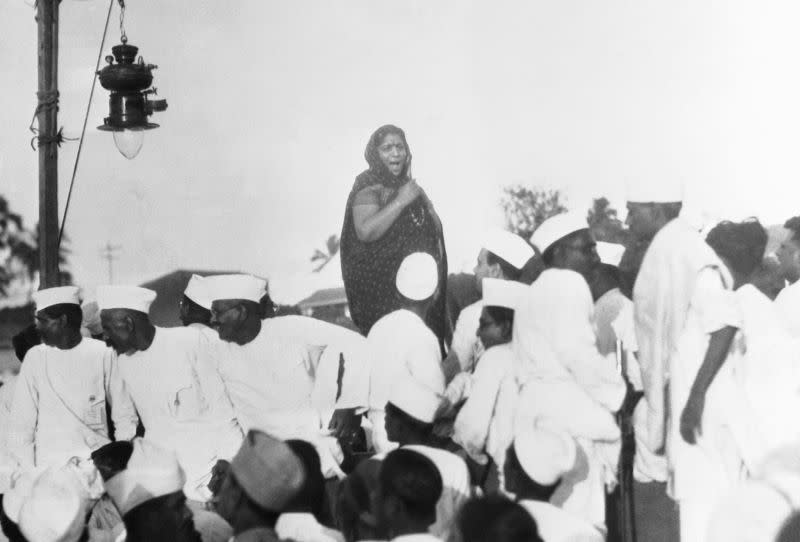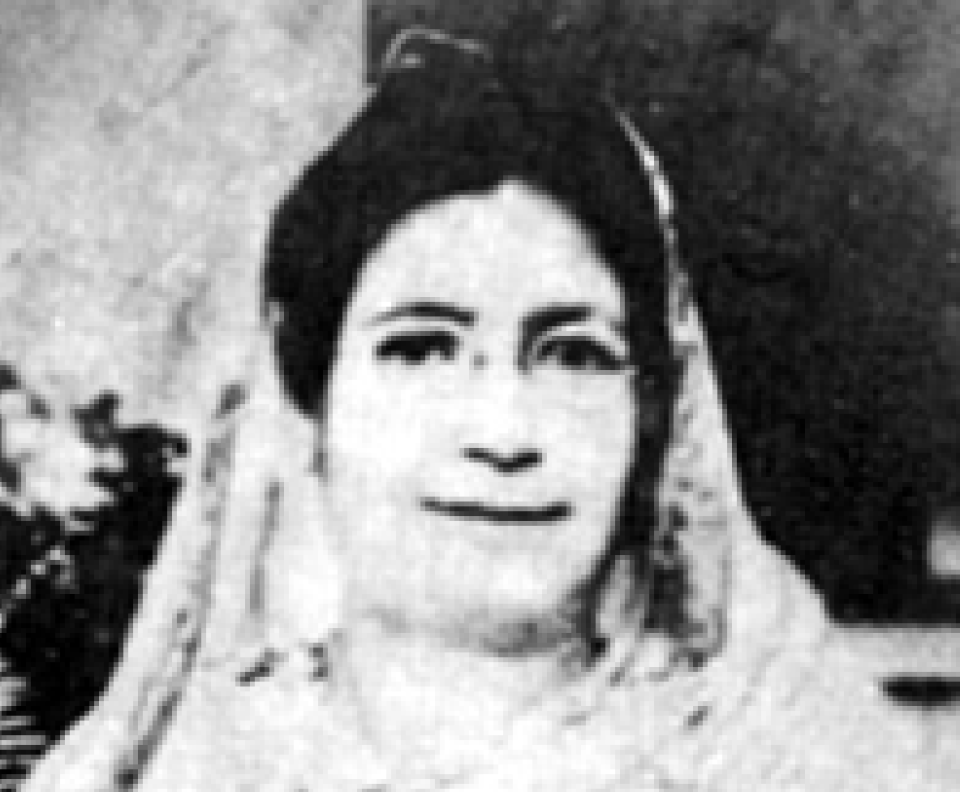Here are the Untold Stories of Women Who Dedicated their Lives to the Freedom Movement
When we think of India's greatest freedom fighters, the names of Bhagat Singh, Chandrashekhar Azaad, Ram Prasad Bismil, and of course the usual suspects: Mohandas Karamchand Gandhi, Netaji Subhas Chandra Bose, Pandit Jawaharlal Nehru, C. R. Das, and Surendranath Banerjea instantly come to mind.

Our history pages brim with inspiring stories of their fight for an independent India. However, the role of women in the Indian Independence Movement has tragically been marginalised, and often, overlooked. Save for a few names like the Rani Lakshmibai of Jhansi, Sarojini Naidu, Annie Besant, and Aruna Asaf Ali, which do make to our textbooks; and there is a fair bit about women picketing; Ram Mohan Roy and the abolishment of regressive practices like 'sati', the names of numerous women who sacrificed their lives for a free India are woefully forgotten.
Names like Matangini Hazra who while hoisting the flag and leading a protest in Calcutta was shot three times but carried on screaming 'Vande Mataram'; Tara Rani from Bihar who in a procession to Siwan Police Station with her husband didn't even flinch when he was shot and instead marched on with resolution; Ashalata Sen, a poet who was so inspired by the Non-Cooperation Movement that she built a weaving machine in Dhaka and participated in the Dandi March.
Today, we pay homage to these brave spirits and thank them for their contributions — no less than their male counterparts — in fighting for the independent India that we know today.
Kanaklata Barua
The story of Kanaklata Barua, a 17-year-old Assamese girl who was shot dead with the tricolour clenched in her hands, is often sidelined amid the more frequently-recounted stories of India’s Freedom Struggle. On September 20, 1942, at the peak of the Quit India Movement, Barua led a protest group, the ‘Mukti Bahini’ to the Gohpur Police Station, in a bid to unfurl the tricolour.
Barua had joined the Mukti Bahini a mere two days before the incident and despite being one of its youngest members, she insisted on leading the protest and after a lot of convincing, was allowed. History records that even when she fell to the British bullets, she didn’t let the tricolour fall to the ground.
After years of being limited to Gohpur, the internet and history enthusiasts have resurrected her story of heroism to the world and today, several schools, a statue in Gohpur and now, a New Coast Guard ship — ICGS Kanaklata Barua — is named in her honour.
Begum Royeka

During the pre-partition years, when the very question of women education was being flung around listlessly, Begum Royeka, an educator in Bengal and active advocator for social change and gender equality, was fighting for the education and emancipation of the Bengali Muslim women. She even established a school, the Sakhawat Girls Memorial High School in 1909, for the downtrodden Bengali Muslim women, to teach them their rights and their roles in becoming unmovable forces in the early 20th century society.
Often called India’s first Bengali Muslim feminist, a more apt title associated with this enigma would be ‘Reformer in a colonised India’. In 1916, she founded a path-paving organisation — the Muslim Women's Association — which fought for women's education and employment. Her contributions to an Independent India came through her need to educate the ‘lowest’ within their masses — women, especially Muslim women — so they could be a part of the greater fight — as rightful citizens of the country.
Tara Rani Srivastava
Hailing from Bihar, Tara Rani and her husband Phulendu Babu were active participants in Gandhi’s Quit India Movement and were known to organise a slurry of protests in Bihar. One of their biggest protests involved hoisting the tricolour — a symbol of resistance and demand for ‘Swadeshi’ — on the roof of the Siwan Police Station.
Gathering a crowd, the duo led the protest march screaming ‘Inquilab’, but the police soon opened fire on them. Phulendu was injured in the firing and Tara Rani bandaged him with a torn part of her sari, and refusing to be deterred, continued on with the march.
When she returned to her husband’s side, he had passed. But she never stopped fighting for India. Her purpose — their purpose — had become so much more than the lives they had come to lead.
Captain Laxmi Sehgal
Very few were brave enough to broach the topic of caste in a pre-partitioned India. Even today, it is a taboo on the subject deemed ‘unpleasant’ by some, and wholly ignored by many. Even though Gandhi had taken up the cause of the Harijans, it was B.R. Ambedkar who began an active fight against the very system.
But alongside these noteworthy names, was a force so powerful, that it was only natural that she was born to create history. Captain Laxmi Sehgal scandalised a lot of people, including her grandmother, when she began to question the archaic caste system in the country and in complete defiance of society as it stood, she walked up to a tribal girl, joined hands with her and began to play.
Years later, after she had moved to Singapore to work for a while, her path crossed with the legendary Netaji Subhas Chandra Bose. She was drawn to the freedom movement from an early age and when she heard that Netaji was looking to recruit women soldiers to his army as well, she reached out. Under his patronage, she began and led a women’s regiment: the Rani of Jhansi regiment.
She was arrested by the British on March 4, 1946, but was released a few months after. Later, she opened her own clinic in Kanpur where she would treat poor people, especially poor women, for free.
Kamaladevi Chattopadhyay
Upon hearing Gandhi’s call for the Non-Cooperation Movement in the country, Kamaladevi Chattopadhyay left behind a cushiony life in London to return to her homeland and join the fight for a free India. She was known to have defied the stringent laws in place in Indian society at the times, because as a young widow, she had remarried Sarojini Naidu’s brother Harindranath Chattopadhyay, but divorced him later — another big first for a ‘well-bred Hindu lady’.
She was the first woman to contest the Madras provincial elections and in 1927, she joined the Indian National Congress. Within a year, she was elected to the All-India Congress Committee. She even visited America during World War II and took with her India’s message of non-violent struggle. She is also credited for establishing the township of Faridabad which helped rehabilitate over 50,000 craftsmen who had chosen to move to India from Pakistan during the Partition.
(Edited by Saheli Sen Gupta)

 Yahoo Movies
Yahoo Movies 
